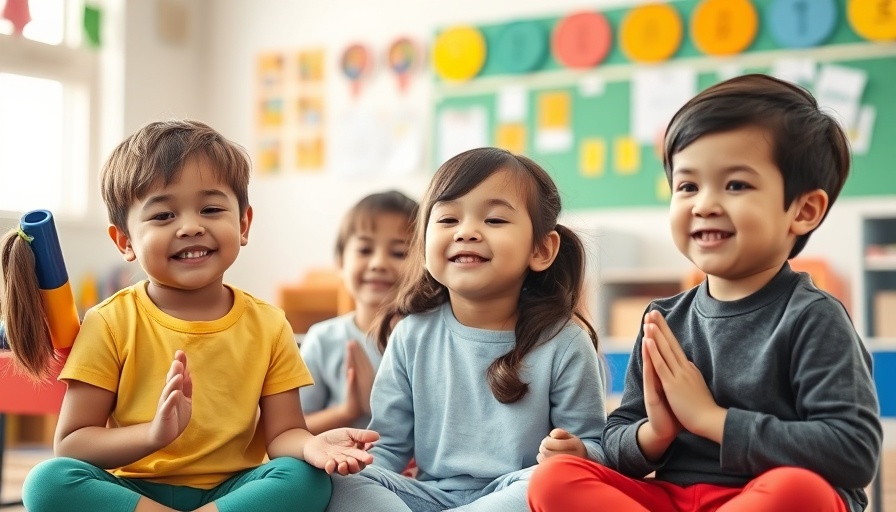
Finding Calm in Chaos: Why Mindfulness Matters for Kids
Every parent understands that childhood is filled with big feelings. Kids encounter a whirlwind of emotions every day, whether it's the excitement of starting school or the frustration of losing a favorite toy. That's where mindfulness comes in, providing a toolkit for managing these emotions. The Calming Hands practice, developed by Rose Felix Cratsley at Ivy Child International, introduces a fun and engaging approach for children to navigate these feelings effectively.
Empowering Kids Through Guided Practices
In today's fast-paced lifestyle, stress isn't limited to adults. Children also experience anxiety, especially with the pressures from school and social interactions. This mindfulness practice encourages children to connect with their breath and body. As kids engage in deep breathing exercises while exploring art through handprint creations, they learn to embrace a peaceful mindset. By modeling this practice, caregivers reinforce the importance of mindfulness as a shared family experience.
Creative Expression as a Path to Emotional Resilience
The Calming Hands activity integrates creativity into mindfulness, making it both an artistic outlet and a mental health tool. Children are guided to create an outline of their hands and personalize it—this tactile engagement helps solidify the calming principles they learn through breathing techniques. The art becomes a visual reminder of their capability to manage emotions.
Practical Tips for Implementing Mindfulness at Home
Getting started with the Calming Hands practice is easy! Here’s a simple outline to help parents incorporate this mindfulness exercise into their routine:
- Materials Needed: Use non-toxic markers, crayons, or paints on a large piece of paper.
- Trace or Paint: Invite your child to make a handprint, allowing them freedom in choosing colors and decorations.
- Count and Breathe: Number each finger from one to ten and guide them to breathe in deeply while slowly counting.
This practice is not only about calming—it's a step toward emotional resilience. The act of creating and reflecting helps children recognize their feelings and develop a sense of awareness.
Supporting Children’s Unique Needs
For children with sensory processing challenges, the Calming Hands technique can be adapted by introducing various textures. Incorporating items like smooth stones or soft fabrics can make the mindfulness practice more engaging. Understanding that every child's sensory experiences differ allows parents to tailor activities that best fit their child's needs.
The Broader Impact of Mindfulness on Family Well-Being
Integrating mindfulness practices at home not only benefits kids; it instills a culture of mental well-being among the entire family. As families engage in these activities together, they build stronger emotional connections, helping children feel more secure in expressing their emotions. This holistic approach to mental health establishes a supportive environment where both parents and children can thrive.
Making Mindfulness a Family Tradition
Make the Calming Hands exercise a family ritual. Regularly coming back to this practice strengthens the foundation of emotional health in your home. By embracing mindfulness together, families can overcome daily challenges while fostering unity and understanding.
Ultimately, as children learn to manage their emotions creatively and consciously, they not only cultivate self-awareness but also lay the groundwork for the resilience necessary to navigate life's ups and downs.
Ready to empower your child with mindfulness? Try the Calming Hands practice at home today and witness the positive transformation it can bring to their emotional world.
 Add Row
Add Row  Add
Add 




 Add Row
Add Row  Add
Add 

Write A Comment